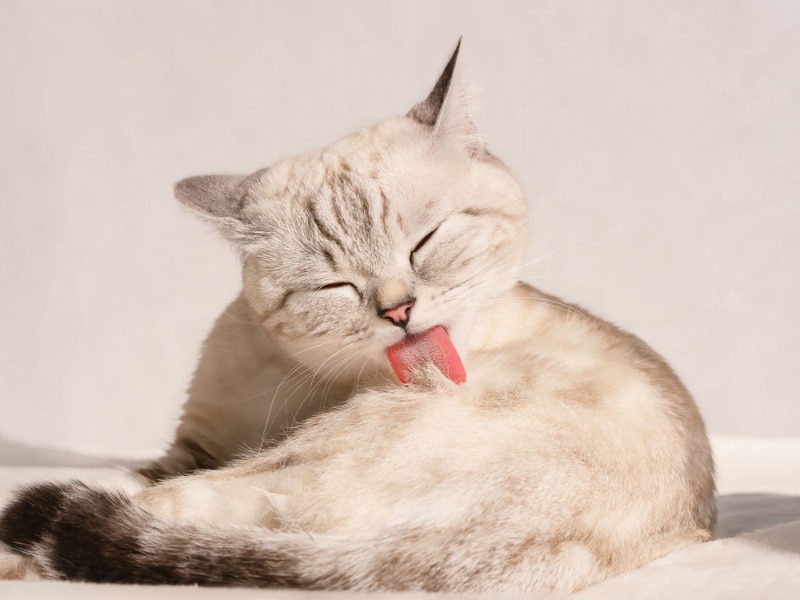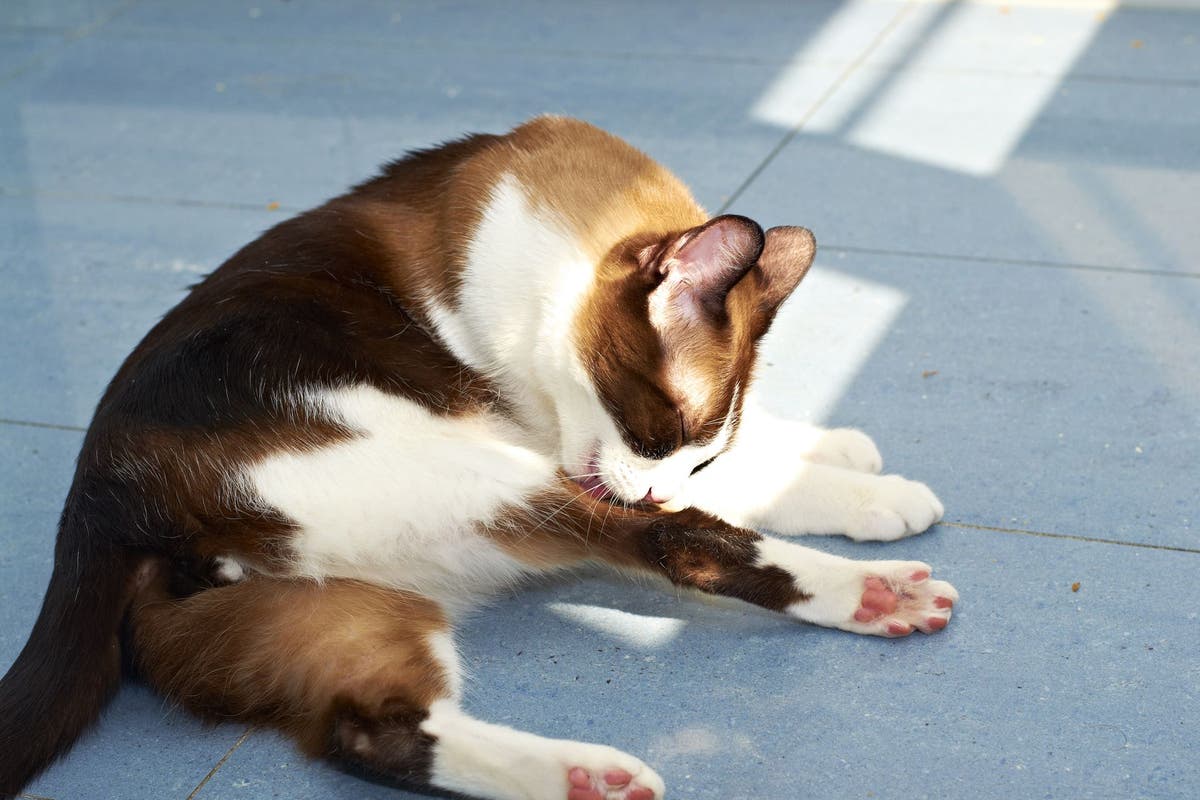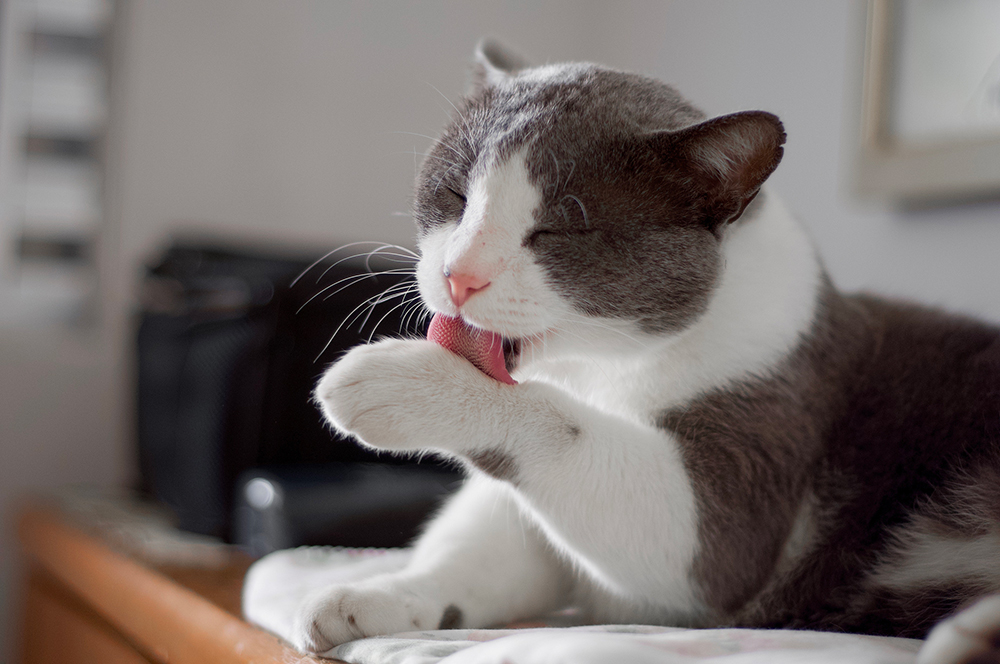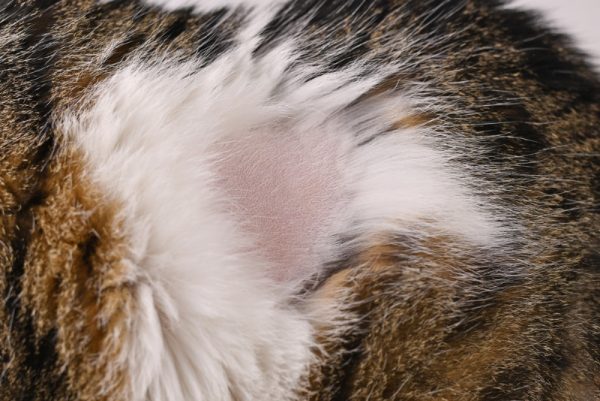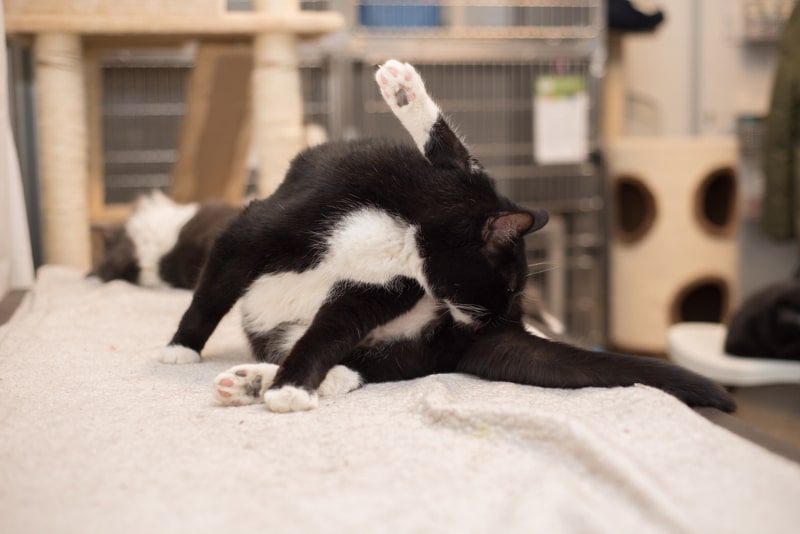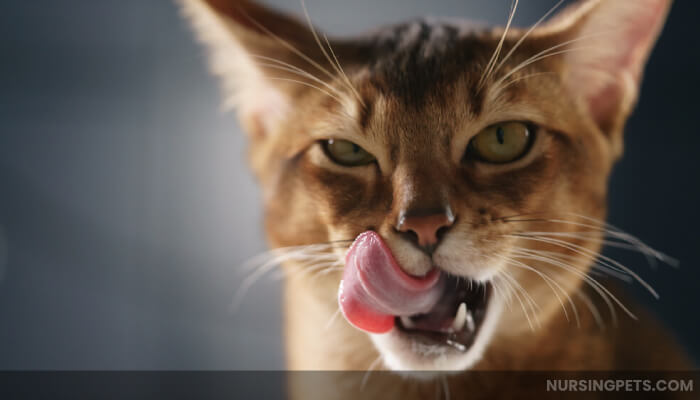Why Would A Cat Lick Its Fur Off
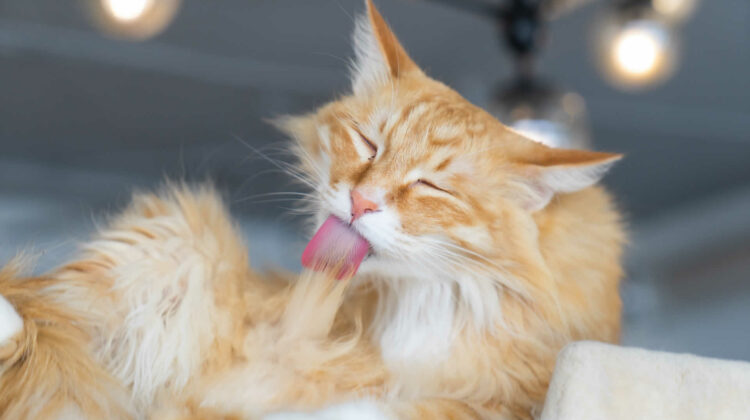
The sight of a cat meticulously grooming itself is commonplace, a symbol of feline fastidiousness. But when grooming turns excessive, morphing into a relentless and damaging habit, it signals a deeper problem. Fur loss, bald patches, and even skin lesions can result from a cat's obsessive licking, leaving owners bewildered and concerned about their beloved pet's well-being.
This article delves into the perplexing world of feline overgrooming, exploring the myriad reasons behind this behavior, from underlying medical conditions to psychological stressors. Understanding the root cause is crucial for providing effective treatment and restoring a cat's health and happiness. We will examine the diagnostic process, treatment options, and preventative measures, drawing upon veterinary expertise and scientific research to shed light on this complex issue.
Medical Causes of Excessive Licking
One of the primary reasons a cat might lick its fur off is due to an underlying medical condition. These conditions often cause itching, irritation, or pain, prompting the cat to overgroom in an attempt to alleviate the discomfort.
Parasitic infestations, such as fleas, mites, and lice, are common culprits. According to the American Animal Hospital Association (AAHA), even a single flea bite can trigger intense itching in sensitive cats. Effective flea control is essential in these cases.
Allergies, both environmental and dietary, can also lead to excessive grooming. Environmental allergens like pollen, mold, and dust mites, or dietary allergens like beef, chicken, or fish, can cause skin inflammation and intense itching, as noted by the Cornell University College of Veterinary Medicine.
Skin infections, whether bacterial or fungal (like ringworm), can also induce excessive licking. These infections often require specific treatments, such as antibiotics or antifungal medications, prescribed by a veterinarian.
Pain, whether from arthritis, injuries, or internal organ issues, can manifest as overgrooming, particularly in the area of the pain. The cat may lick excessively in an attempt to soothe the affected area. A thorough veterinary examination is vital to diagnose and manage any underlying pain.
Psychological and Behavioral Factors
When medical causes have been ruled out, psychological or behavioral factors become the primary suspects behind a cat's obsessive grooming. Stress, anxiety, and boredom can all contribute to this behavior.
Stress and anxiety are significant triggers for compulsive grooming. Changes in the environment, such as moving to a new home, introducing a new pet, or even a change in routine, can cause significant stress for a cat. Ohio State University Veterinary Medical Center highlights the importance of identifying and addressing the source of stress to reduce overgrooming.
Boredom can also lead to excessive licking. Cats are intelligent and curious creatures, and when they lack stimulation, they may turn to grooming as a way to occupy themselves. Providing enrichment activities, such as interactive toys, scratching posts, and climbing structures, can help alleviate boredom and redirect the cat's attention.
Compulsive disorders, similar to obsessive-compulsive disorder (OCD) in humans, can also manifest as excessive grooming in cats. While less common, these disorders often require behavioral therapy and, in some cases, medication to manage.
Diagnosis and Treatment
Diagnosing the cause of excessive licking involves a thorough process that typically starts with a visit to the veterinarian. A physical examination, along with a detailed history of the cat's behavior and environment, will help the vet narrow down the possible causes.
Diagnostic tests may include skin scrapings, blood tests, allergy testing, and fungal cultures. These tests help rule out or confirm medical conditions like parasitic infestations, allergies, and infections.
Treatment will depend on the underlying cause. If a medical condition is identified, treatment will focus on addressing that condition. For example, flea control products will be prescribed for flea infestations, and allergy medications may be recommended for allergies.
Behavioral modification is often necessary when psychological factors are contributing to the overgrooming. This may involve providing environmental enrichment, reducing stress, and using positive reinforcement techniques to redirect the cat's behavior. Feliway diffusers, which release synthetic feline pheromones, can also help reduce stress and anxiety.
In some cases, medication may be prescribed to manage anxiety or compulsive disorders. Anti-anxiety medications can help reduce the urge to groom excessively.
Prevention and Management
Preventing excessive licking starts with providing a healthy and stimulating environment for your cat. Regular veterinary checkups are also crucial for early detection of any underlying medical conditions.
Environmental enrichment is key to preventing boredom and reducing stress. Providing plenty of toys, scratching posts, and climbing opportunities can help keep your cat entertained and mentally stimulated.
Stress reduction is also important. Minimize changes in the environment, provide a safe and comfortable space for your cat to retreat to, and consider using pheromone diffusers to create a calming atmosphere.
Regular grooming can also help reduce the need for self-grooming. Brushing your cat regularly removes loose fur and helps prevent mats and tangles.
The American Society for the Prevention of Cruelty to Animals (ASPCA) emphasizes that early intervention is crucial for managing excessive grooming. The sooner the underlying cause is identified and addressed, the better the chances of successfully resolving the problem.
Looking Ahead
Excessive licking in cats is a complex issue with a variety of potential causes. Understanding these causes, from medical conditions to psychological stressors, is essential for providing effective treatment and improving a cat's quality of life.
Further research into feline behavior and the development of new treatment options are needed to better address this problem. By working closely with veterinarians and implementing preventative measures, cat owners can help ensure their feline companions live happy and healthy lives, free from the discomfort and distress of excessive grooming.
Continued awareness and education about this issue will empower cat owners to recognize the signs of overgrooming and seek appropriate veterinary care, ultimately benefiting the well-being of countless cats.
